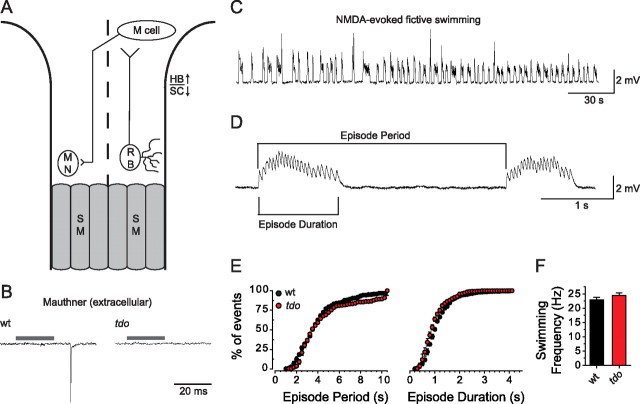Figure 4.
Tactile stimuli in touchdown mutants fails to activate second-order neurons and the locomotor network that generates swimming in zebrafish. A, Schematic of a minimal touch-evoked circuit in zebrafish. MN, Motor neuron; SM, skeletal muscle; HB, hindbrain; SC, spinal cord. Dashed line designates the dorsal midline; anterior is up. B, Extracellular recordings from wild-type and touchdown mutant larva using electrodes positioned to detect Mauthner neuron spikes showing that tactile stimulation activates M cells in wild-type but not touchdown larvae at 55 hpf. Gray bars indicate time of the stimulus to the puffer pipette. C, Several minutes of NMDA-evoked fictive swimming episodes recorded from axial skeletal muscle in a wild-type larva (55 hpf) in the presence of 3 μm curare, a concentration sufficient to attenuate membrane depolarization below the level necessary to induce excitation–contraction coupling. D, A faster sweep of NMDA-evoked fictive swimming detailing episode period, episode duration, and swimming frequency (frequency of endplate potentials within an episode). The first episode lasted 1.06 s and had 22 peaks, for a swim frequency of 20.75 Hz. E, Cumulative plots of episode periods and durations in wild-type and touchdown mutant larvae showing that episode period and durations are not affected by the mutation. F, Histogram showing that the frequency of NMDA-evoked fictive swimming is comparable between wild-type and touchdown mutant larvae (n = 5 for each).

